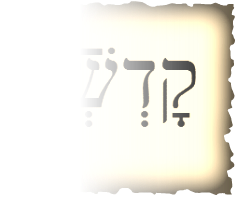
א)First – if the Shva appears as the first letter of the word, it is always a Shva Nah. ב)Two - If there are two Shvas in a row in the middle of a word, the second one is a Shva Nah. (If two Shvas appear at the end of a word, as in the word אַנְתְּ, they are both a Shva Nach.) ג) Gedolah – A Shva appearing directly after a Tenuah Gedolah is a Shva Nah. ד) Dagesh – A Shva under a letter with a Dagesh is a Shva Nah. ה) HaDomos – When two same letter appear next to each other, and the first one has a Shva, it is a Shva Nah, as in the word Hinine (הנני).
I will qualify this a bit. There are two Shva Nah rules which seemingly can be taught very easily, and one that is a bit harder, but still relatively easy. Rules one and two are really quite easy. As mentioned before, rule one is natural. If the Shva is the first letter of the word, it must be pronounced. Thus, teaching this rule is a no-brainer. Rule two is also quite easy. Although when there are two Shvas at the end of the word, they are both pronounced as a Shva Nach, as in the word אַנְתְּ,when two Shvas appear in the middle of a word, it is more natural to ‘blend’the first one (make it Nach), and pronounce the second one (make it Nah). Thus, these two rules are simple. Rule five (HaDomos) is also not too difficult. When you have two the same letter, and the first one has a Shva, it would be difficult to make it into a Shva Nach. Therefore, teaching that it is a Shva Nah is simple enough.
This brings us to rules three and four. Rule three is quite difficult, since the difference between Tenuah Gedolah and Tenuah Ketanah is a hard concept for youngsters. (MODERATOR: See post “To Nuah or not To Nuah, That is the Question” in the Kriah Roundtable by K. Gross) Therefore, teaching this rules would pose great difficulty, and I question if it is necessary, since looking for the line above the letter would do the trick. Rule four is not too difficult, since it is simple to look for the Dagesh. However, once looking, why not look for the line? In addition, some children do not realize that the Pintel (dot) in the Bais, Kof, Pay and Tof is considered a Dagesh. However, a line is a line is a line, etc.
And your opinion is . . .
K. Gross
 RSS Feed
RSS Feed